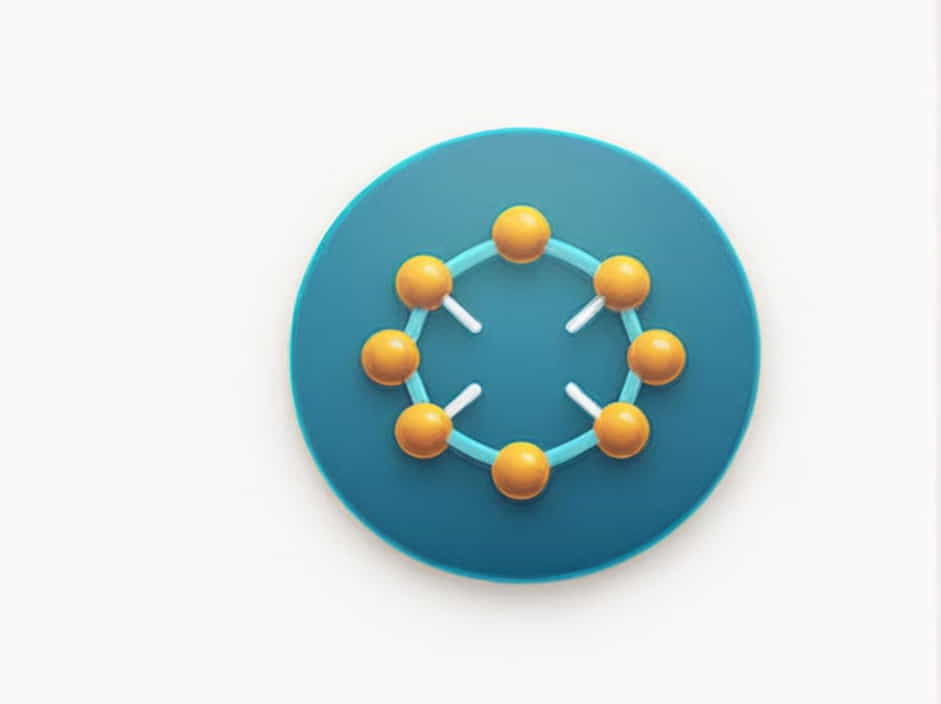Understanding bond angles in molecules is crucial for predicting their shapes, properties, and reactivity. The approximate bond angles in a molecule can be determined using the Valence Shell Electron Pair Repulsion (VSEPR) theory, which explains how electron pairs around a central atom influence molecular geometry.
This topic explores how to predict bond angles, the role of electron domains, and how hybridization and lone pairs affect molecular structure.
What Are Bond Angles?
A bond angle is the angle formed between three atoms in a molecule, specifically the angle between two adjacent bonds connected to a central atom. Bond angles help define molecular geometry, which affects physical properties such as polarity and reactivity.
Factors Affecting Bond Angles
Several factors influence bond angles in a molecule, including:
- Number of electron pairs (bonded and lone pairs) around the central atom
- Electron repulsion forces
- Hybridization of the central atom
- Size and electronegativity of substituent atoms
Using these factors, we can approximate the bond angles of different molecules.
VSEPR Theory and Molecular Geometry
How VSEPR Theory Predicts Bond Angles
The Valence Shell Electron Pair Repulsion (VSEPR) theory states that electron pairs around a central atom repel each other and arrange themselves to minimize repulsion. This leads to predictable molecular shapes and bond angles.
Common Molecular Geometries and Their Bond Angles
Below are some typical molecular shapes, based on the number of bonding and lone pairs, along with their approximate bond angles:
| Molecular Geometry | Electron Domains | Bond Angle (°) | Example Molecule |
|---|---|---|---|
| Linear | 2 | 180 | CO₂, BeCl₂ |
| Trigonal Planar | 3 | 120 | BF₃, NO₃⁻ |
| Bent (Trigonal Planar) | 3 (2 bonds + 1 lone pair) | ~118 | SO₂ |
| Tetrahedral | 4 | 109.5 | CH₄, NH₄⁺ |
| Trigonal Pyramidal | 4 (3 bonds + 1 lone pair) | ~107 | NH₃ |
| Bent (Tetrahedral) | 4 (2 bonds + 2 lone pairs) | ~104.5 | H₂O |
| Trigonal Bipyramidal | 5 | 90, 120, 180 | PCl₅ |
| Seesaw | 5 (4 bonds + 1 lone pair) | ~90, ~120 | SF₄ |
| T-Shaped | 5 (3 bonds + 2 lone pairs) | ~90 | ClF₃ |
| Octahedral | 6 | 90, 180 | SF₆ |
| Square Pyramidal | 6 (5 bonds + 1 lone pair) | ~90 | BrF₅ |
| Square Planar | 6 (4 bonds + 2 lone pairs) | 90 | XeF₄ |
How Lone Pairs Affect Bond Angles
Lone pairs of electrons exert greater repulsion than bonding pairs, causing bond angles to deviate from their ideal values. The effects of lone pairs on bond angles are as follows:
- One lone pair: Bond angles decrease slightly (e.g., NH₃, where the angle is ~107° instead of 109.5°).
- Two lone pairs: Bond angles shrink further (e.g., H₂O, where the angle is ~104.5°).
- Three lone pairs: Leads to more drastic changes (e.g., ClF₃ forming a T-shaped structure).
Hybridization and Bond Angles
The hybridization of the central atom plays a significant role in predicting bond angles. Here’s how hybridization relates to molecular geometry and bond angles:
| Hybridization | Electron Domains | Molecular Geometry | Approximate Bond Angle |
|---|---|---|---|
| sp | 2 | Linear | 180° |
| sp² | 3 | Trigonal Planar | 120° |
| sp³ | 4 | Tetrahedral | 109.5° |
| sp³d | 5 | Trigonal Bipyramidal | 90°, 120° |
| sp³d² | 6 | Octahedral | 90° |
Examples of Hybridization and Bond Angles
- Carbon Dioxide (CO₂) – Linear, 180°
- The carbon atom is sp hybridized, leading to a linear shape with a bond angle of 180°.
- Boron Trifluoride (BF₃) – Trigonal Planar, 120°
- The boron atom is sp² hybridized, forming a trigonal planar structure with a bond angle of 120°.
- Methane (CH₄) – Tetrahedral, 109.5°
- The carbon atom is sp³ hybridized, creating a tetrahedral shape with bond angles of 109.5°.
- Ammonia (NH₃) – Trigonal Pyramidal, ~107°
- The nitrogen atom is sp³ hybridized but has one lone pair, reducing the bond angle to ~107°.
- Water (H₂O) – Bent, ~104.5°
- The oxygen atom is sp³ hybridized but has two lone pairs, reducing the bond angle to ~104.5°.
Predicting Bond Angles in Complex Molecules
For more complex molecules, predicting bond angles requires:
- Identifying the central atom and determining the number of electron pairs.
- Applying VSEPR theory to predict molecular shape.
- Considering lone pairs and electronegativity differences, which may slightly alter bond angles.
Example: Phosphorus Pentachloride (PCl₅)
- Electron Domains: 5
- Geometry: Trigonal Bipyramidal
- Bond Angles: 120° in the equatorial plane, 90° between axial and equatorial bonds
Example: Sulfur Hexafluoride (SF₆)
- Electron Domains: 6
- Geometry: Octahedral
- Bond Angles: 90° and 180°
How Electronegativity Affects Bond Angles
Electronegativity differences between atoms can also impact bond angles:
- Higher electronegativity pulls bonding electrons closer, reducing bond angles.
- Larger atoms with lower electronegativity exert less repulsion, leading to more ideal bond angles.
For example:
- In CH₄ (methane), all bonds are identical, so the tetrahedral bond angle is 109.5°.
- In NH₃ (ammonia), the lone pair pushes bonds closer, reducing the angle to ~107°.
- In H₂O (water), two lone pairs further decrease the bond angle to ~104.5°.
Predicting approximate bond angles in molecules is essential for understanding molecular structure, reactivity, and physical properties. Using VSEPR theory, hybridization, and lone pair repulsions, we can estimate bond angles accurately.
While ideal bond angles provide a starting point, real-world molecules often experience deviations due to lone pairs, electronegativity, and atomic size. By applying these principles, chemists can better predict molecular behavior and design new materials with desired properties.
